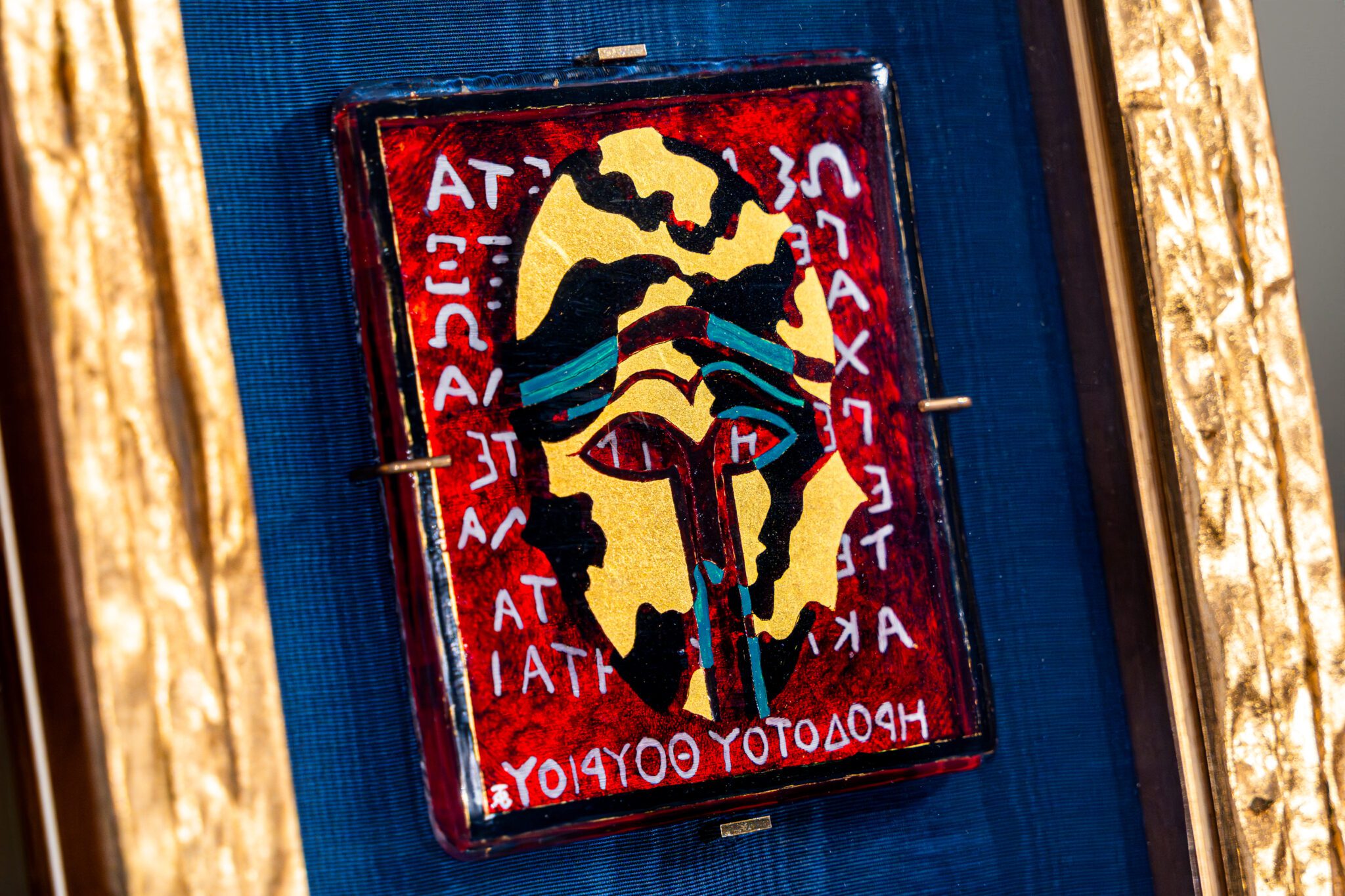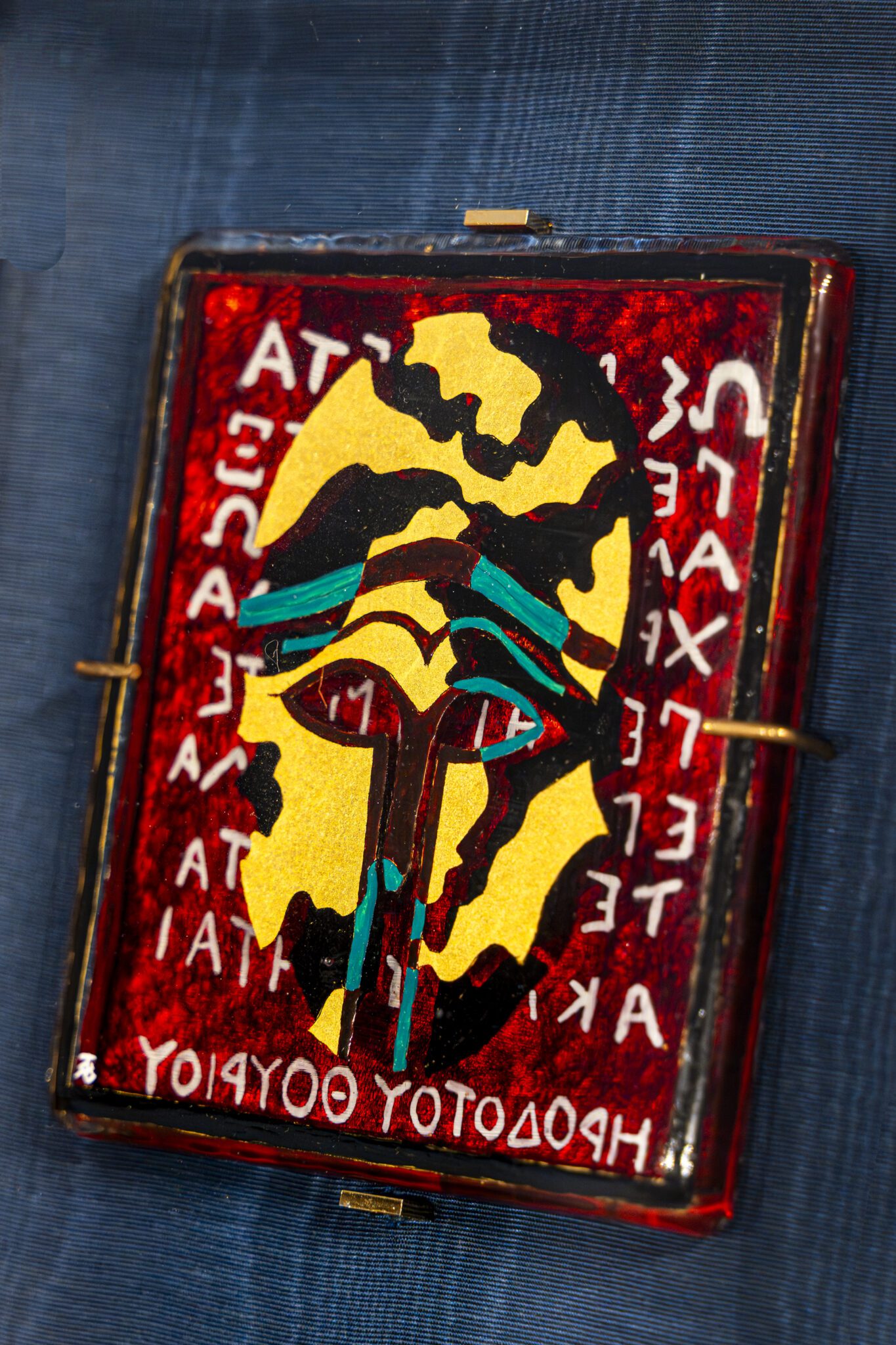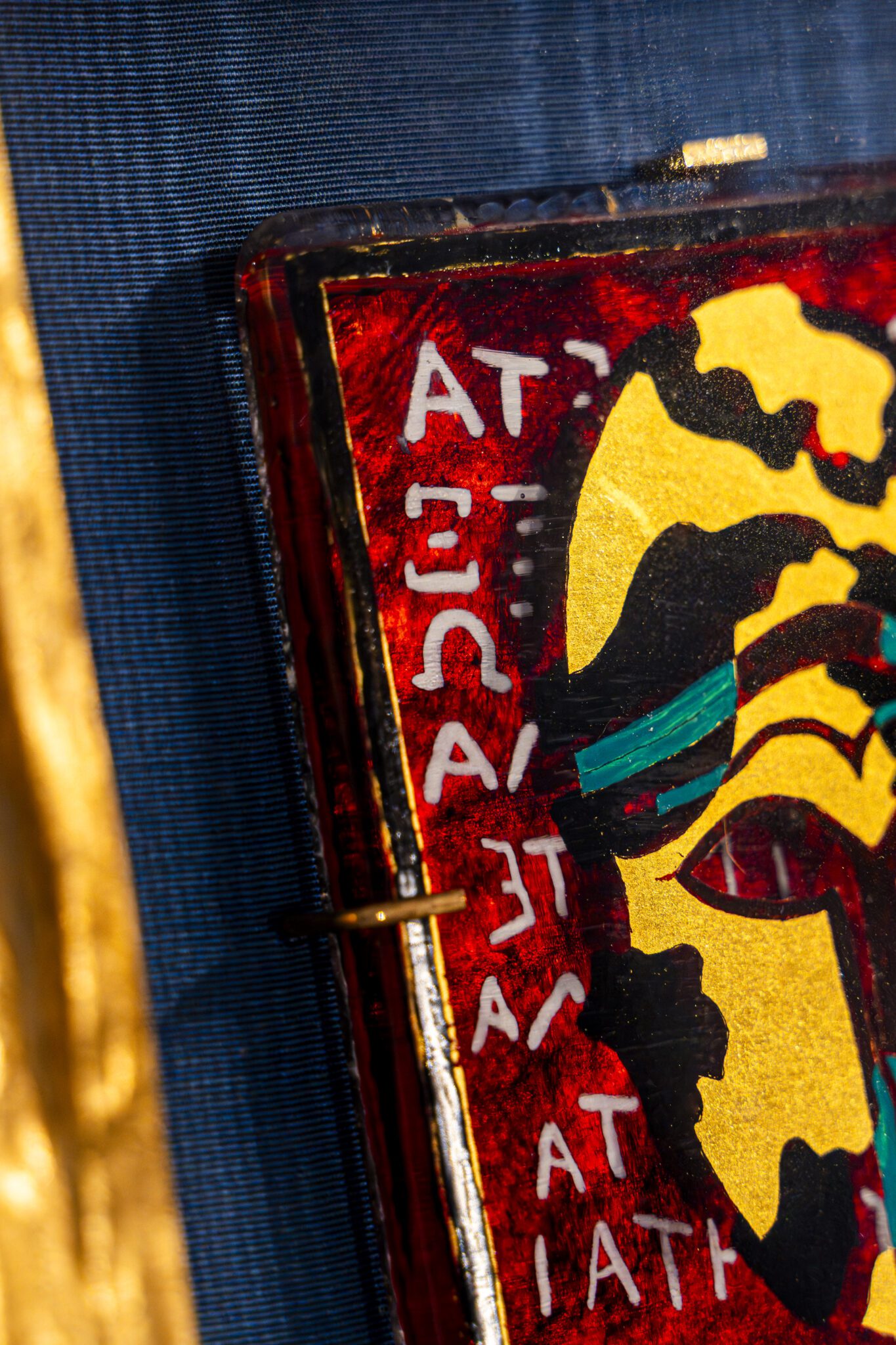
Sightlines
Size
12 x 10 cm
Year
2016
Material
Murano Glass, 24K gold leaf and glass enamels
Technique
Graffito
Price
On request
Author
Riccardo Toso Borella
or
Short description
The artwork presents a helmet, a symbol of conflict and history, divided into two levels on the opposite sides of a Murano glass plate. The golden part represents what is noble and loved, while the rusted part symbolizes what we reject. Only by observing both levels together can one grasp the overall meaning, highlighting how different perspectives complement each other. The piece invites reflection on the relationship between the self and the other, suggesting that understanding emerges from the acceptance of opposition. Against a red background, quotes from Herodotus’ Histories emphasize the importance of not forgetting history and considering all perspectives. The interplay between the two-dimensionality of vision and the three-dimensionality of understanding materializes the complexity and contradiction of the world.
Description
A helmet, a symbol of conflict and antiquity, is fragmented into two levels corresponding to the two faces of the glass plate. The first, made of gold leaf, depicts the parts of the helmet that we cherish and consider noble, while the second shows the sections corroded by rust: these are the parts we hate and fight against. Both levels appear incomplete when considered individually, but their gaps are resolved in the frontal and holistic view, where the two complement each other.
This duality of the helmet represents the eternal conflict of civilization and of humanity itself, susceptible to different interpretations depending on the perspective from which it is observed. The forms take on different configurations, and the sense of the whole is grasped only by mediating between the opposing centrifugal and tearing forces, having the courage to confront one’s own history, one’s own enemy, the other from oneself, and the self itself.
We will realize that the other is inextricably linked to the self, and we could end up taking the side of rust, of mirroring, and seeing the world upside down. Perhaps we will come to hate the golden world. Against a red background, some lines from Herodotus’ Histories are written and evoked specularly: “ὡς μήτε τὰ γενόμενα ἐξ ἀνθρώπων τῷ χρόνῳ ἐξίτηλα γένηται, μήτε ἔργα μεγάλα τε καὶ θωμαστά, τὰ μὲν Ἕλλησι, τὰ δὲ βαρβάροισι ἀποδεχθέντα, ἀκλέα γένητα,” which means “so that neither the events that occurred through the actions of men over time would be forgotten, nor great and extraordinary deeds, some performed by the Greeks and others by the barbarians, would become inglorious.” This underscores the necessity of keeping in mind and embracing both instances, looking at the model from all points of view.
The interplay between the two-dimensionality of vision and the three-dimensionality of understanding materializes the complexity and contradiction of the world.




